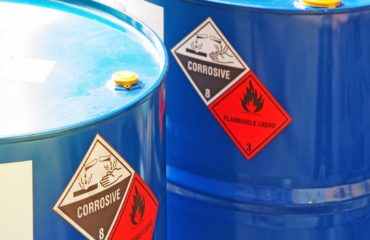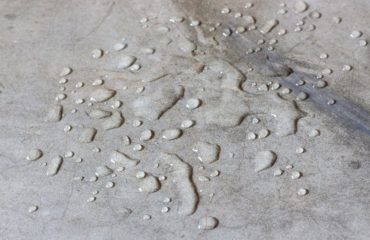Maybe ten years ago, nobody paid as much attention to the environment. Products were produced with only performative aspects and results in mind. There were not as many federal and state regulations on products, especially concrete sealers. Similarly, there was not a widespread understanding of the dangers of certain chemical and industrial products. For instance, worker would toil for hours in closed-quarters areas full of asbestos, a practice which only stopped less than a decade ago when the cancer-causing properties of asbestos were discovered.
While the chemicals in concrete sealers are not as bad as those found in asbestos and other known cancer-causing agents (as far as we know now), they certainly are not good for one’s health. The increasing realization of their harmfulness has led to a revolution in the industry. This revolution began with the understanding of the dangers of volatile organic compounds, or VOCs.
VOCs are carbon-based compounds released from solvent-based concrete sealers. Technically speaking, they have a high vapor pressure that is released into the air from chemical-based products, like paints or concrete sealers, due to their low boiling points. Once in the air, they are absorbed into the environment, leading to a gradual build-up of harm. They also, however, can be absorbed by humans and animals in their vicinity, leading to a myriad of potential health risks ranging from allergic reactions to cancer, depending on the particular volatile organic compound and its level of release.
Federal law restricts the VOCs normally found in concrete sealers to be under 600 grams/liter. While this does not preclude the use of solvent-based sealers, it has led to manufacturers to begin producing water-based concrete sealers that offer the same level of comprehensive protection as their solvent-based counterparts. Even more recently, states in the Northeast including New York, Pennsylvania, Maryland, the District of Columbia, Virginia, New Jersey, and Delaware restricted the use of concrete sealers if their VOC content was over 400 grams/liter, further throttling the solvent-based sealers. Parts of California have the strictest regulations of all, requiring all sealers to have a VOC content of lower that 100 grams/liter, effectively prohibiting the use of solvent-based sealers.
While these prohibitions are rendering one of the primary concrete sealing staples obsolete, they are also encouraging research and development into new products. Manufacturers have begun to produce concrete sealing offerings that are water-based, thereby complying with all VOC regulations, all while giving concrete a competitive level of protection. In the years to come, these products will increasingly become stronger and more competitive until solvent-based sealers likely become a thing of the past.




